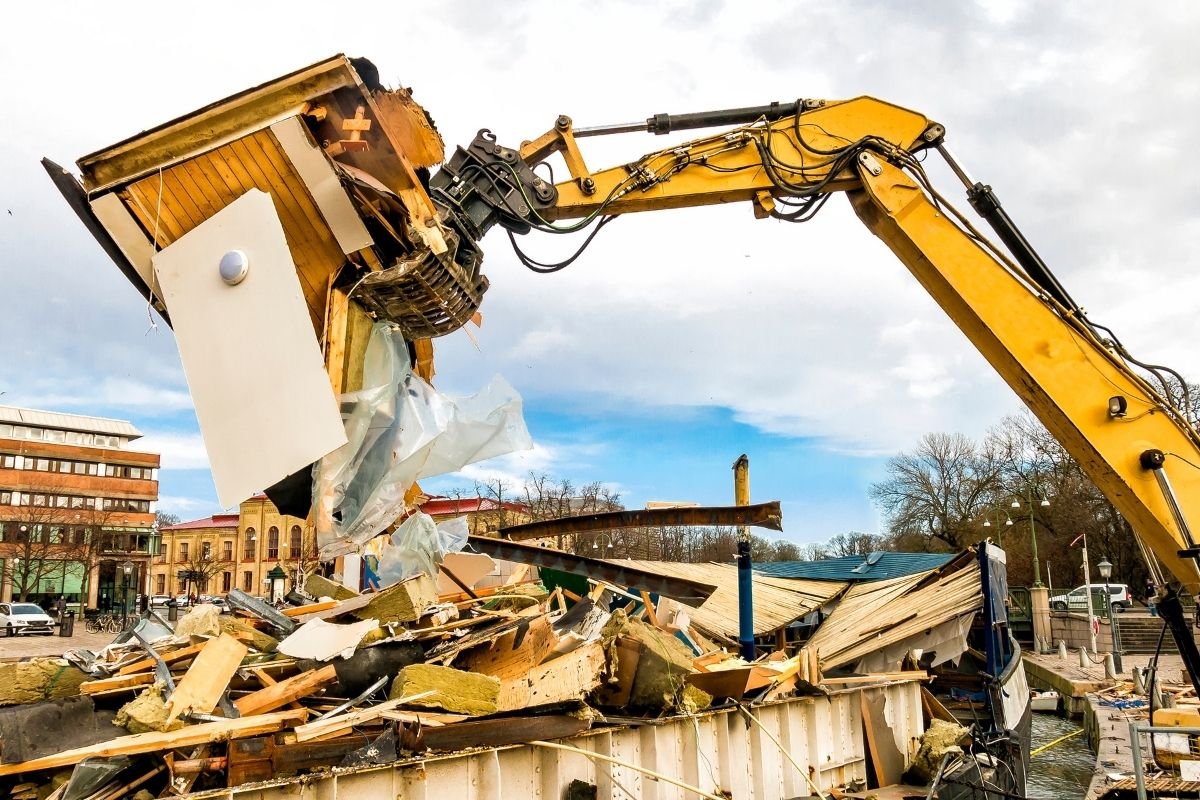Things To Consider Before Starting a Demolition Project
There can be more to the average demolition project than simply slamming a wrecking ball through a structure and putting another one in its place. It’s a calculated, methodical exercise that requires trained demolition experts and several weeks of planning.
If a demolition project is on the cards for your home or business, here are a few of the many things you might like to consider before it gets underway.
How You’ll Demolish the Building
You might be surprised to learn that the best demolition method for one structure might not be the best for another. The option you choose depends on how you remove the debris, the building materials, and the reason for the demolition.
Experts commonly rely upon four main demolition methods: implosion, demolition arm, wrecking ball, and selective. Implosion is a popular option in built-up areas as it allows you to collapse a building onto itself with minimal impact on the surrounding area.
However, if your structure has masonry, steel, and reinforced concrete, a long demolition arm might be a superior option as it allows you to break the building from the top down. If you don’t have any concerns about noise, vibration, and dust, your demolition business might suggest a wrecking ball suspended from a crane.
Selective demolition has also become quite popular as it allows you to reuse or recycle materials from a building rather than sending everything to landfill.
Asbestos
If the building you’re demolishing was built before the year 2000, asbestos should be something you factor into your demolition plan early on. Failure to consider this hazardous material might mean that dangerous friable asbestos is released into the air, putting workers and the general public at risk of exposure.
If you suspect asbestos, consult an asbestos removal company to carry out testing and remove asbestos-containing materials before demolition begins.
Planning Permissions
Most councils throughout New Zealand have different rules and regulations around demolition works, and all require you to have a building consent if your building is over three storeys high. There can also be strict rules around demolishing heritage or character buildings.
Make sure you have all your ducks in a row and the appropriate permissions by visiting your local council. You can then go full steam ahead with the consents you need.
Utilities
If a building was in use up until it was destined for demolition, it would likely have had connected services like power, water, gas, and internet. Ensure these services are safely terminated and that all companies supplying services have been informed about your intentions.
Failure to take care of utilities might mean your team is faced with unexpected hazards during demolition works, and you might even have to pay ongoing charges for those services to be connected.
Neighbouring Properties
Your neighbours will likely be in full support of you demolishing a building that’s no longer fit for purpose or in good condition. However, that’s not to say they’ll appreciate all the noise and ongoing work happening right next to their properties.
While you won’t be able to prevent minor inconveniences during your demolition project, keeping your neighbours informed about what you’ll be doing might help keep them on side and reduce the risk of complaints.
Create a flyer to explain what will be happening on what days and door-knock surrounding properties to introduce yourself. You might also see the value in providing them with contact information if they have any queries or concerns.
Brush Up on the Building Code
When you’re a skilled demolition professional, you’ll know all the ins and outs of how to demolish a building safely. However, there’s no harm in giving the building code one final lookover to ensure you’re doing everything by the book.
Pay attention to 2.9 Demolition of Detached Building, in particular, which outlines reminders about contacting relevant service authorities, handling hazardous building materials like asbestos, controlling silt runoff, managing noise, and securing the site to restrict public access.
Building Material Disposal
Much of your focus can be on the demolition task itself, but it can also be crucial to put time and effort into planning how you’ll dispose of your building materials post-demolition.
Asbestos building materials must be disposed of at authorised sites, and you may need a special permit. Contact your local landfill or the NZ Demolition and Asbestos Association if you’re unsure where to dispose of your asbestos-containing materials.
Start Your Next Demolition Project on the Right Foot
A great deal of planning can be required for the average demolition project. If you’re struggling with where to begin or need a helping hand with asbestos removal or demolition, contact the experts at Chemcare to assist. We can offer safe and reliable demolition services for both commercial and residential properties, including houses, garages, factories, office buildings, and more.

